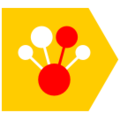
OpenCV is a library of programming functions mainly for real-time computer vision. Originally developed by Intel, it was later supported by Willow Garage, then Itseez. The library is cross-platform and licensed as free and open-source software under Apache License 2. Starting in 2011, OpenCV features GPU acceleration for real-time operations.
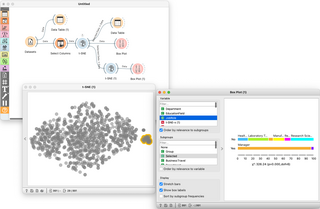
Orange is an open-source data visualization, machine learning and data mining toolkit. It features a visual programming front-end for explorative qualitative data analysis and interactive data visualization.

scikit-learn is a free and open-source machine learning library for the Python programming language. It features various classification, regression and clustering algorithms including support-vector machines, random forests, gradient boosting, k-means and DBSCAN, and is designed to interoperate with the Python numerical and scientific libraries NumPy and SciPy. Scikit-learn is a NumFOCUS fiscally sponsored project.
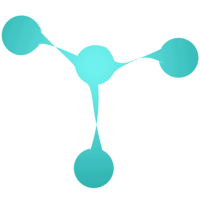
Torch is an open-source machine learning library, a scientific computing framework, and a scripting language based on Lua. It provides LuaJIT interfaces to deep learning algorithms implemented in C. It was created by the Idiap Research Institute at EPFL. Torch development moved in 2017 to PyTorch, a port of the library to Python.
Eclipse Deeplearning4j is a programming library written in Java for the Java virtual machine (JVM). It is a framework with wide support for deep learning algorithms. Deeplearning4j includes implementations of the restricted Boltzmann machine, deep belief net, deep autoencoder, stacked denoising autoencoder and recursive neural tensor network, word2vec, doc2vec, and GloVe. These algorithms all include distributed parallel versions that integrate with Apache Hadoop and Spark.

TensorFlow is a free and open-source software library for machine learning and artificial intelligence. It can be used across a range of tasks but has a particular focus on training and inference of deep neural networks.
The following table compares notable software frameworks, libraries and computer programs for deep learning.

XGBoost is an open-source software library which provides a regularizing gradient boosting framework for C++, Java, Python, R, Julia, Perl, and Scala. It works on Linux, Microsoft Windows, and macOS. From the project description, it aims to provide a "Scalable, Portable and Distributed Gradient Boosting Library". It runs on a single machine, as well as the distributed processing frameworks Apache Hadoop, Apache Spark, Apache Flink, and Dask.
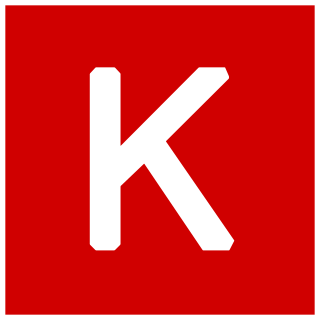
Keras is an open-source library that provides a Python interface for artificial neural networks. Keras acts as an interface for the TensorFlow library.
Caffe is a deep learning framework, originally developed at University of California, Berkeley. It is open source, under a BSD license. It is written in C++, with a Python interface.
PyTorch is a machine learning library based on the Torch library, used for applications such as computer vision and natural language processing, originally developed by Meta AI and now part of the Linux Foundation umbrella. It is recognized as one of the two most popular machine learning libraries alongside TensorFlow, offering free and open-source software released under the modified BSD license. Although the Python interface is more polished and the primary focus of development, PyTorch also has a C++ interface.

ROCm is an Advanced Micro Devices (AMD) software stack for graphics processing unit (GPU) programming. ROCm spans several domains: general-purpose computing on graphics processing units (GPGPU), high performance computing (HPC), heterogeneous computing. It offers several programming models: HIP, OpenMP/Message Passing Interface (MPI), and OpenCL.
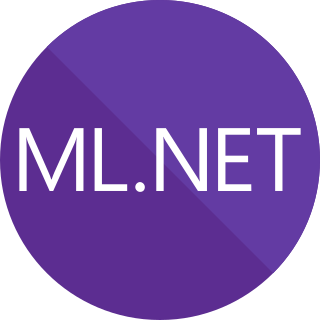
ML.NET is a free software machine learning library for the C# and F# programming languages. It also supports Python models when used together with NimbusML. The preview release of ML.NET included transforms for feature engineering like n-gram creation, and learners to handle binary classification, multi-class classification, and regression tasks. Additional ML tasks like anomaly detection and recommendation systems have since been added, and other approaches like deep learning will be included in future versions.
In computer vision, SqueezeNet is the name of a deep neural network for image classification that was released in 2016. SqueezeNet was developed by researchers at DeepScale, University of California, Berkeley, and Stanford University. In designing SqueezeNet, the authors' goal was to create a smaller neural network with fewer parameters while achieving competitive accuracy.

Dask is an open-source Python library for parallel computing. Dask scales Python code from multi-core local machines to large distributed clusters in the cloud. Dask provides a familiar user interface by mirroring the APIs of other libraries in the PyData ecosystem including: Pandas, scikit-learn and NumPy. It also exposes low-level APIs that help programmers run custom algorithms in parallel.
Kubeflow is an open-source platform for machine learning and MLOps on Kubernetes introduced by Google. The different stages in a typical machine learning lifecycle are represented with different software components in Kubeflow, including model development (Kubeflow Notebooks), model training (Kubeflow Pipelines,Kubeflow Training Operator), model serving (KServe), and automated machine learning (Katib).

DeepSpeed is an open source deep learning optimization library for PyTorch. The library is designed to reduce computing power and memory use and to train large distributed models with better parallelism on existing computer hardware. DeepSpeed is optimized for low latency, high throughput training. It includes the Zero Redundancy Optimizer (ZeRO) for training models with 1 trillion or more parameters. Features include mixed precision training, single-GPU, multi-GPU, and multi-node training as well as custom model parallelism. The DeepSpeed source code is licensed under MIT License and available on GitHub.

NNI is a free and open-source AutoML toolkit developed by Microsoft. It is used to automate feature engineering, model compression, neural architecture search, and hyper-parameter tuning.
LightGBM, short for light gradient-boosting machine, is a free and open-source distributed gradient-boosting framework for machine learning, originally developed by Microsoft. It is based on decision tree algorithms and used for ranking, classification and other machine learning tasks. The development focus is on performance and scalability.
CuPy is an open source library for GPU-accelerated computing with Python programming language, providing support for multi-dimensional arrays, sparse matrices, and a variety of numerical algorithms implemented on top of them. CuPy shares the same API set as NumPy and SciPy, allowing it to be a drop-in replacement to run NumPy/SciPy code on GPU. CuPy supports Nvidia CUDA GPU platform, and AMD ROCm GPU platform starting in v9.0.
